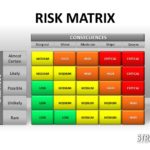Diversification means that different things apply to different people. So many investors consider any kind of split across bonds and stocks as the proper level of diversification only in a single portfolio, but unfortunately holding these two popular investments is not enough.
To significantly protect and reduce risk against unexpected market swings, investors should try to use a multi-asset investing strategy.
What is multi-asset investing strategy?

Multi-asset strategy is the latest name that has been adopted by the investment management industry for what is called as balanced funds. Despite its fancy name, this is a subject that affects all investors.
Whether you are a retail investor looking after your own retirement portfolio or an institutional manager running billions of dollars, what we are about to discuss must be relevant to you at least in a few significant ways.
Multi-asset strategy is the type of investments strategy that involves Investing in various asset classes. Commonly, this is a strategy that uses an asset allocation program on top of the sub-strategies that invest in an individual asset classes. As the name implies, multi-asset investing strategy will look at your portfolio from multiple angles.
Instead of what might be a petty focus on this quarter’s performance, multi-asset portfolios also carries in the dimensions of diversification, risk factors, market cycles, and complementary strategies. Actually, these combinations are not always designed to provide short-term numbers. Instead, their goal is to provide as much certainly as possible in achieving the results that the investor want.
If you think about how global and complex markets are, how much harder it is to surpass mature sectors on the market, and how about the impacts events such as 2008 had on portfolios with a short-term focus, you will agree that multi-asset investing strategy is the best solution can help.
Why should investors care about multi-asset investing strategy?
Based on the historical evidence when increasing volatility, stocks and bonds in the market often move in line with each other. Changing economic environment that causes one market decrease can attract other with it, that is why increasing the correlation between stocks and bonds are proper to do.
Therefore, it is important for investors to diversity in various levels, not only through stocks and bonds market. Generally, investors know that markets are loyal to no one and a market correction at the some point is unavoidable.
A skilled investor knows how to guard against a decrease in the monetary value of single assets, investors must aim to diversity in different asset classes, also see at using a strong mix of their portfolios by looking for classes of assets outside of stocks and bonds.
Holding various asset classes that do not correlate in a portfolio can limit negative side of exposure, while also providing attractive annual potential returns.
The Case for Multi-Asset Classes
Empirical evidence shows that in periods of high volatility, stock and bond markets often move in a series one another. Changing economic conditions that push one market down can attract another. Therefore, it is important to increase the correlation between stocks and bonds, also to pursue diversification on multiple levels.
Financial markets are cyclical and it is profitable that market correction of some kind will eventually occur again. To protect themselves from changes in the value of a single asset, investors should look to diversity within distinct asset classes, also consider to bring a healthy mix to their portfolio by pursuing asset classes outside stocks and bonds.
By holding multiple levels, non-correlated asset classes in a portfolio can limit negative exposure, while also providing attractive annual potential returns. Traditional thinking clarify that because stocks and bonds have different risk profiles, holding them in different proportions in the same portfolio is an efficient way to manage portfolio risk.
70-30 or 60-40 divisions between stocks and bonds, for example, diversified split that can be adjusted based on investor’s desire for risk. This idea, however, ignores periods of high market volatility that can occur during markets corrections when stocks and bonds tend to be more correlated with each other. So far, a limited portfolio of stocks and bonds can often experience more significant losses.
What are the Main Categories of Multi-Asset Strategies?
The old balanced fund were generally put together by combining a gist stock fund and a gist bond fund with some cash as a cushion. As time goes by, gist stock and bond funds developed into funds of multiple asset classes.
A balanced fund consist of such stock and bond funds, each of this specializing in one segment of the market, must really be named an asset allocation fund, despite in most cases the merely kept the old balanced fund moniker.
In addition, there is a unique category of multi-asset investing strategy fund that deserves to be called a strategy that deliberately covers only a limited segment of the entire universe. This limited segment can be anything, for instance, equity growth, alternative, or international.
A very popular target date is also a type of multi-asset investing strategy. The different from typical multi-asset investing strategy fund is that the target date funds have an asset allocations that vary with time or target dates of withdrawal.
A highly distinct population of multi-asset investing strategy has emerged, but the strategy itself can be grouped into four basic categories:
1. Core
These multi-asset investing strategy is especially driven by traditional beta, with relatively limited tactical asset allocation.
2. Risk parity
These multi-asset investing strategy cover a broad range of approaches to build a risk-balanced portfolio, often by leveraging lower-volatility assets.
3. Idiosyncratic
More focused on absolute returns, idiosyncratic strategy provides access to a broader range of return drivers and are more dynamic in their asset allocation, resulting in greater negative mitigation than core strategy.
4. Diversified inflation
These effort to build an inflation-sensitive portfolio, usually with an absolute target of returns, for example holdings include Treasury Inflation Protected securities (TIPs), natural resource equity, and commodities.
Regard the Investor’s Risk Capacity
One of crucial factor in designing a suitable portfolio is an individual investor’s specific situation. For instance, younger one, high-income earner may be in a position to take more risk than an individual who is approaching retirement, also is more focused on generating income from their pension or investment social security.
Commonly, some investors have a longer time horizon than others, it is allowing them more time too to recover from any short-term market correction. More conservative investors with less ability to handle volatility also means may not have that flexibility. However, without calculating the investor situation and unique investment objectives, it is important to understand that investment decisions are not made in a vacuum.
Each investor has a unique risk capacity, one of them can be identified and quantified in a risk capacity score whis is a measure of how much risk an individual can execute. This score actually is based on five specific dimensions of risk capacity: attitude toward risk, time horizon and liquidity needs, income and savings rate, also investment knowledge.
Risk capacity can be considered as a measure of an investor’s ability to get stock market returns. Calculating risk capacity is the first step to decide which portfolio will produce optimal returns for each investor. The value of risk capacity determines the proper risk exposure for investor’s portfolio.
Trend When Diversifying and Factor in The Market Conditions
Taking into account broad market conditions and macroeconomic trends is an important step in forming a mix of assets that best suits the circumstances of individual investors. Fo example, the level and direction of market interest rates are factors that contribute in determining allocation decisions. Another important consideration is Economic productivity as measured by Gross Domestic Product (GDP).
In general, if the prevailing interest rate rises, because they have passed the year 2018, the bond prices will fall. The fall in the Federal Reserve from its benchmark interest rate to almost 2% in June 2018 had a clear negative effect on bond prices. In addition, the trend of rising interest rates in the United State is projected to continue over the next few years.
The fact that an increase in interest rates tends to have a silencer effect on equity, the market is not often discussed as its impact on bond prices. Cheap money will make it easier to operate and grows productivity. Conversely, when capital costs increase for companies because of rising market interest rates, it becomes more expensive for companies to finance operations. This can limit productivity growth and affect stock prices. If the Federal Reserve continues to raise interest rates, the long bull market investors are enjoying under some pressure in the long-term.
Non-traditional asset classes, such as commercial real estate, private equity and private debt, can often act as a hedge against rising interest rates. Incorporating these alternative assets into a portfolio that includes stocks and bonds allows an investor to reduce the correlation of their overall portfolio. In addition, the portfolio will be better positioned to hedge against rising interest rates.
There is no risk-free investment strategy, anyhow, by diversifying in multi-asset classes, investors can reduce the impact of one macroeconomic event market on individual portfolios.
A Diversification will Protects Your Portfolio form Emotional Investing
In the world of investment, one thing is certain, market will go up and down as the economy moves through different growth cycles, taking the emotions of investors along with them. Managing emotions of investors, both at the top and valley of the market, is one of the hallmarks of successful investors. Whatever happens on the market, a diversified portfolio can help prepare you to stay focused on the long term, knowing that your money is working for you.
Diversification means holding various types of investments in your portfolio. When choosing how to diversity, start with your investor profile. The right mix of basic asset classes, cash, fixed income, and equity will depend on your investment goals and others factors such as time and comfort horizons with volatility. In each asset class, each investment can act as a building block with the aim of creating a portfolio with strong foundation.
- Cash and cash equivalent investments can give you a stable base for your portfolio and easy access to cash to be tapped at short notice. One potential drawback, return may not keep up with inflation.
- Fixed income investments generate cash flow also can provide some stability to your portfolio. Can be sensitive to move in interest rates.
- Equity investments can provide the greatest potential for long-term growth along with a higher degree of risk.
Financial markets do not typically move in observe with one another. Moreover, no one can reliably predict how a particular asset class will perform well in any given years. One asset class may be leading the market while others left behind and it may be completely different the next year.
When You have to Invest in Non-Traditional Assets, Invest It Wisely to Reduce Risk
Not everyone has time, or feels like it to learn about each individual investment option available. This can be very important. Therefore, speculative investment without acquiring the right expertise or conducting the right expertise or conducting the research needed to thoroughly examine an idea is the same as gambling.
Alternative investment is often a difficult concept to analyze. While doing appropriate research might seem like a big task now especially if your current portfolio is performing well, investing in non-traditional asset classes can make a big difference in protecting your portfolio in the event of decline, when correlated markets are under pressure.
By incorporating non-traditional asset classes, investors can diversify their portfolio and potentially can reduce overall risk. Example of non-traditional asset classes may include natural resources, precious metals, and real estate. However, non-traditional asset classes may also extend into areas or equity of stock and bond markets such as world bond or high yield bonds, and emerging markets.
The following page will provide you an overview of the different types of asset classes available for your portfolio within America’s market FLEX II
- Commodities
Raw material pr hard asset classes that are good used in commerce - Emerging market bonds
Emerging market funds may invest in bonds with exposure to emerging markets, or combination of both equities and bonds. However, emerging market bonds may offer higher yields than comparable bonds from more developed countries. - Global infrastructure
Global infrastructure securities invest in companies involved in energy, utilities, transportation, and communications industries around the world.






